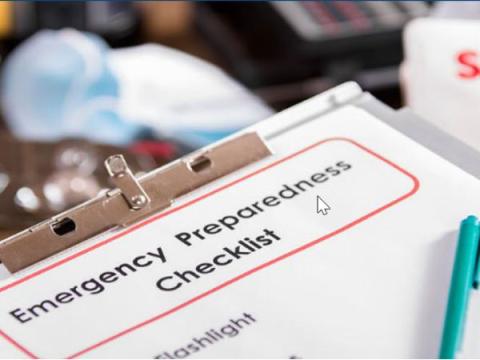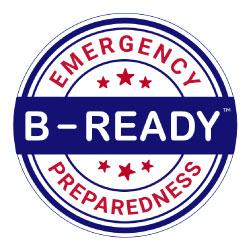
Disasters happen; you have the power to be prepared.
With a changing climate, natural disasters like hurricanes, earthquakes, major floods, and others are becoming more frequent and severe. Many people are not fully prepared to handle a significant catastrophic event, whether a regional, national, or area-specific disaster.
Emergency preparedness is critical to minimizing the impact of a disaster and can even save lives. For businesses, developing an effective Disaster Recovery Plan (DRP) can be crucial.
Learn more below about disaster preparedness steps, resources (such as emergency plans, recovery specialists, and community support), and considerations to ensure you are ready for the next event.
How To Be Ready for an Emergency
Disasters can happen to anyone, at any time, in any place. Emergency readiness is an important procedure for every person to complete to ensure they are as prepared as possible.
Creating an Emergency Plan
An emergency plan lets you avoid confusion during a disaster and proceed with a known, established checklist. Activities like charging your phone and keeping a stocked first-aid kit can be beneficial steps, but a plan helps you and your family have an agreed-upon strategy, including evacuation routes, to keep yourselves safe and well.
Emergency Kits ChecklistKits of supplies can be vital during a disaster. Read our blog here to learn more about setting up a kit and see the below list for required supplies:
|
Image

|
Preparing for Various Natural Disasters
Both man-made and natural disasters pose significant threats. Man-made disasters are unpredictable and can strike anywhere, including crises such as war, bioterrorism, looting, rioting, urban fires, and industrial complex accidents. These incidents require recovery planning, as they are often due to technological malfunction or a human error.
Natural disasters are becoming increasingly frequent and catastrophic due to climate change. In 2023, tornadoes, wildfires, and various other calamities uprooted the lives of 2.5 million individuals. Droughts, wildfires, and tornadoes have all significantly increased in occurrence as well. Some best practices for preparing for natural disasters that can help minimize damage and health impacts include;
- Keeping your phone charged
- Avoid using tap water
- Stay away from standing water and floodwater
- Obtain and keep a first aid kit
- Store important documents in waterproof containers
Read our blog to learn more about these steps and other tips to prepare for natural disasters.
Now, let's dive into preparedness for two common natural disasters.
Earthquake Safety Information
Each year, the southern California area has about 10,000 earthquakes, with several hundred measuring greater than magnitude 3.0. These disasters can have severe consequences on the health and safety of people nationwide and across the globe. As always, be sure to tune into information from NOAA or your local radio or news station. Below is some helpful earthquake safety information, including preparing and what to do during and after an earthquake.
Earthquake Preparedness Tips
Steps to secure your home and protect your family.
What to Do During and After an Earthquake
Safe practices, first aid, and recovery steps.
Hurricane Preparedness List
The United States annually experiences about six hurricanes during the hurricane season, from June 1 to November 30. To avoid you or your loved ones falling victim to the devastation from these weather events, it is important to prepare a plan of action for when a hurricane is anticipated or confirmed to be coming. Below are some helpful components of a hurricane preparedness list. As always, be sure to tune into information from NOAA or your local radio or news station.
Preparing Your Home and Property
Securing windows, clearing debris, and emergency supplies.
Evacuation Plan and Safe Zones
How to create evacuation routes and find shelters.
Preparing With Different Abilities
While it can be challenging to prepare and respond to a disaster in any state of health, individuals with disabilities or those who are elderly are at a greater risk. Disaster Central recognizes that marginalized and poor communities are often the most affected by climatic disasters. To help you and your loved ones in times of need, explore the B-Ready app, designed to provide you with the necessary tools and information to prepare for and navigate through natural disasters.
Rehabilitation and Recovery Specialists
Rebuilding after a natural disaster is hard, especially as these events often happen when we are least prepared or expecting them. While there are several helpful items to remember about rebuilding or repairing, retaining a rehabilitation or recovery specialist can often be most helpful in mending the damage.
Housing Rehabilitation Specialist Services
Assistance in rebuilding, relocating, and temporary housing options.
Additional ResourcesEnsure you and your loved ones are prepared to respond appropriately to any disaster in the coming year. Disaster Central has helped many people successfully prepare for the unexpected with the "B-READY" app. You can also access our community forums and social media for real-time updates and support. When disasters strike, readiness is paramount to recovery. Explore Disaster Central's additional resources, download the app, or consult with our team. |
Image

|